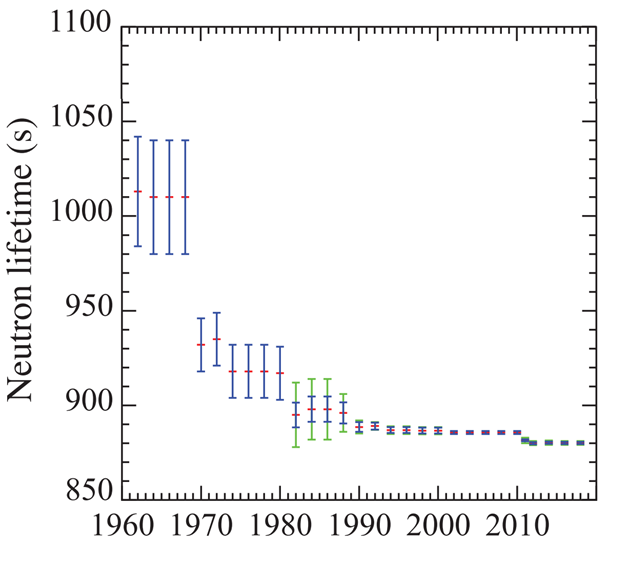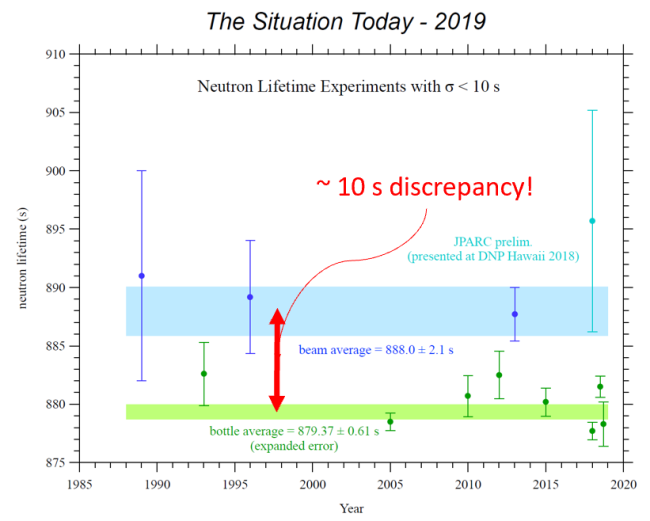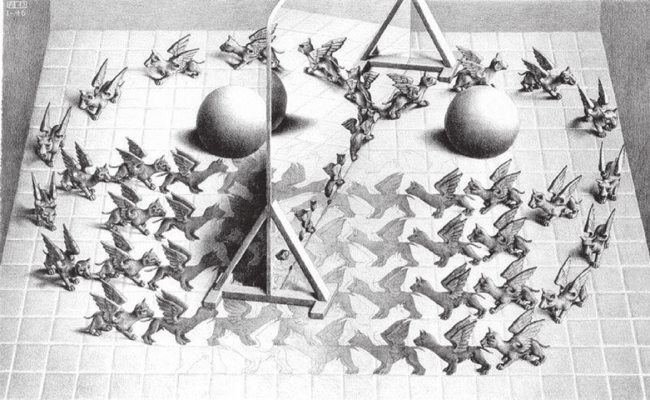Chadwick discovered the neutron in 1932. The neutron lifetime has been measured for over half a century, ever since research reactors became available. Over the years, the uncertainty of the measurements reduces with improving experimental techniques. But notice that the mean neutron lifetime also decreases with time.

The plot above shows the evolution of the neutron lifetime reported by the Particle Data Group. The most recent downshift was triggered by a measurement in 2005, carried out by a Russian group led by Anatoli Serebrov. Before 2005, the averaged lifetime was 886 s, and 15 years later, it is 7 seconds shorter, with uncertainty reduced to half a second.

There are two leading methods to measure the neutron lifetime. One observes the neutrons decay-in-flight (i.e., the beam method), and the other one measures the exponential decay of neutrons trapped in a bottle (i.e., the bottle method). The two methods give neutron lifetimes that differ by 10 seconds! This discrepancy seem to be present for more than 20 years. This seems to suggest that neutrons in a bottle seem to disappear faster than the rate of beta-decay.
The question is what could happen to the neutrons in a bottle, if they don't all decay by turning themselves into protons and emitting betas (in order to conserve charge) and anti-neutrinos (to conserve energy)?
Some theorists suggest that the neutrons might decay into dark particles; others suggest that neutrons could oscillate into the mirror world. The "magic mirror" print by M.C. Escher below best illustrates the idea of neutron-mirror neutron oscillation.

Some also suggest that the neutrons might be scattered by dark-matter blobs.
While the theorists are making conjectures, experimentalists are working very hard to check their measurements to make sure that no mistakes were made. Experiments using the beam and the bottle techniques both have plans to improve the precision of the measurements.
What is your favorite hypothesis to explain this neutron lifetime puzzle?
